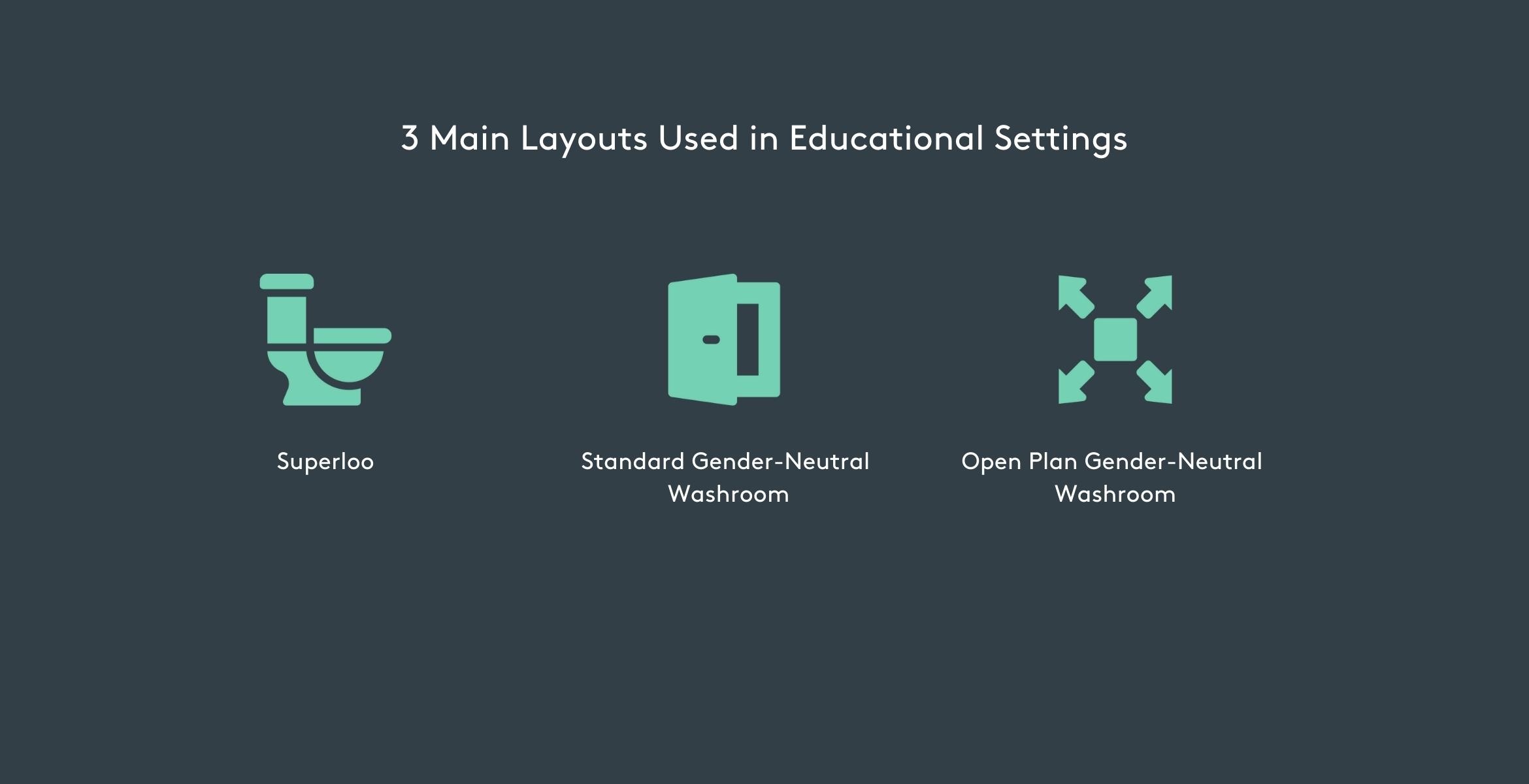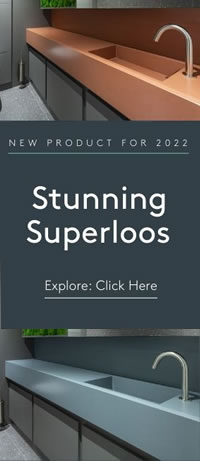All-gender washrooms are becoming increasingly popular in schools and universities.
When they’re done well, gender-neutral washrooms can curb bullying and promote an inclusive culture on campuses. But gender-neutral washrooms can also be controversial, particularly when they’re designed badly.
At Concept Cubicle Systems, we’ve spoken to lots of architects that are frustrated at the lack of practical guidance available to design and specify gender-neutral facilities.
With this guide we’ve attempted to plug an important information gap, with details on:
We’ve also produced a supplementary guide to some of the rules and regulations surrounding gender-neutral washrooms in schools.
A gender-neutral washroom is a washroom that can be used by a person of any gender or gender identity.
In an education setting, gender-neutral washrooms can help:
Antisocial behaviour is a problem in many schools. Experienced school administrators will tell you that washrooms can be hotspots for bullying, vandalism and more.
Lauren Seager-Smith, CEO of anti-bullying charity Kidscape said: “School toilets and changing rooms can be hotspots for bullying because they are often unsupervised and out of sight of CCTV cameras.”
Gender-neutral washrooms are easier to monitor for two main reasons:
Students, staff and other people that don’t identify as being male or female may not feel comfortable using gendered toilets. This could be for a number of reasons, including:
If someone doesn’t feel comfortable using male and female-only facilities, they should not be restricted to using accessible toilets. This could perpetuate damaging misconceptions about trans and non-binary people.
Gender-neutral facilities also help promote inclusivity in other ways. For example, gender-neutral washrooms can make life easier for parents with young children.
In the next section, we will discuss some of the key considerations that you should take into account when designing a gender-neutral washroom for schools, colleges or universities.
Before we get to designs, it’s important to consider whether installing a gender-neutral washroom is right for your project.
We’ve already talked about the benefits of using gender-neutral facilities, but this doesn’t mean they’re right for every application.
We advise our clients that gender-neutral washrooms are generally suitable in schools, colleges, universities and offices – but we recognise that going gender neutral isn’t right for every building.
Take schools for example. Every school is made up of a different mix of pupils from different ages and backgrounds. Each school will also have a different mix of parents, governors and other stakeholders.
Ultimately, the decision about whether to install gender-neutral washrooms should be left to educational leadership. They are in the best position to understand what’s right for their school, college or university.

Gender-neutral facilities come in many different shapes and sizes. There are three main types layouts that are used in education settings:
A self-contained, single-user washroom. Like many self-contained disabled units, this type of washroom includes private handwashing facilities.
Superloos offer users more privacy, they can fit into small spaces and it’s easy to turn them into separate men’s and women’s facilities if necessary.
A bigger washroom that can be used by anyone, this type of washroom will usually have multiple cubicles and shared handwashing facilities.
A gender-neutral washroom won’t have exposed urinals (like some male-only toilets) and it will have full-height privacy cubicles.
Like a standard gender-neutral washroom, but with no exterior door or less of a ‘barrier’ to entry.
These washrooms are often integrated into corridors to allow staff to monitor the washrooms more effectively.
It will be up to an architect, in consultation with the educators, to decide which type of layout is best for a school.
Some schools may decide that privacy is an important factor, in which case superloos might be the best solution. Other schools might emphasise monitoring, which favours an open-plan layout.
Whatever layout you choose, gender-neutral washrooms need to be more private. This means using full-height privacy cubicles to fully enclose these spaces.
Gender neutral washrooms can have urinals, but they should not be ‘exposed’. Using single urinals housed within a cubicle can work, but is not always advisable.
If converting male and female-only washrooms to gender neutral facilities, designers should convert some or all urinals to toilet bowls – otherwise the conversion disadvantages some students.
If a school had enough space and money to achieve the perfect gender neutral washroom, it would look something like this.
The washroom should have full-height cubicles and no exterior door or barrier, so the washroom is visible to passersby.
For a wide variety of reasons, some students would rather not use gender-neutral washrooms. To help these boys and girls feel safe and comfortable, schools should also provide single gender toilets.
